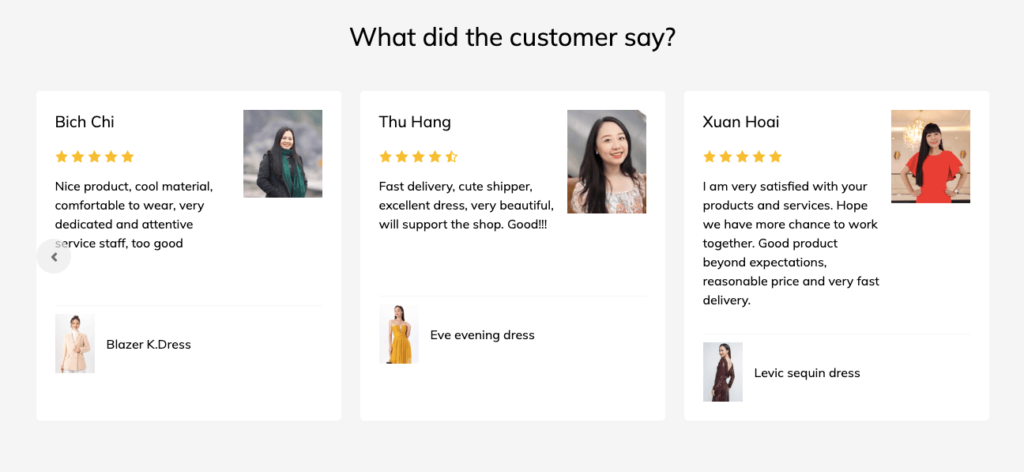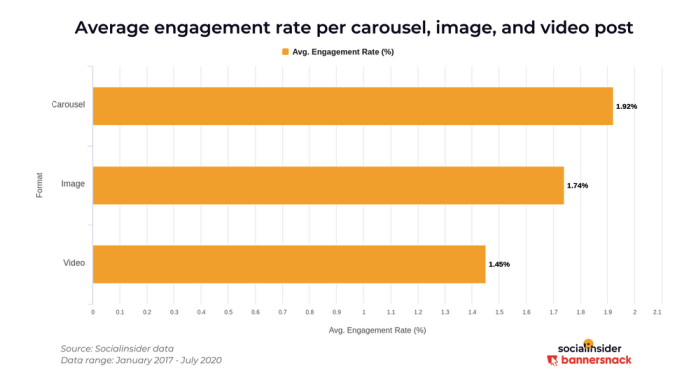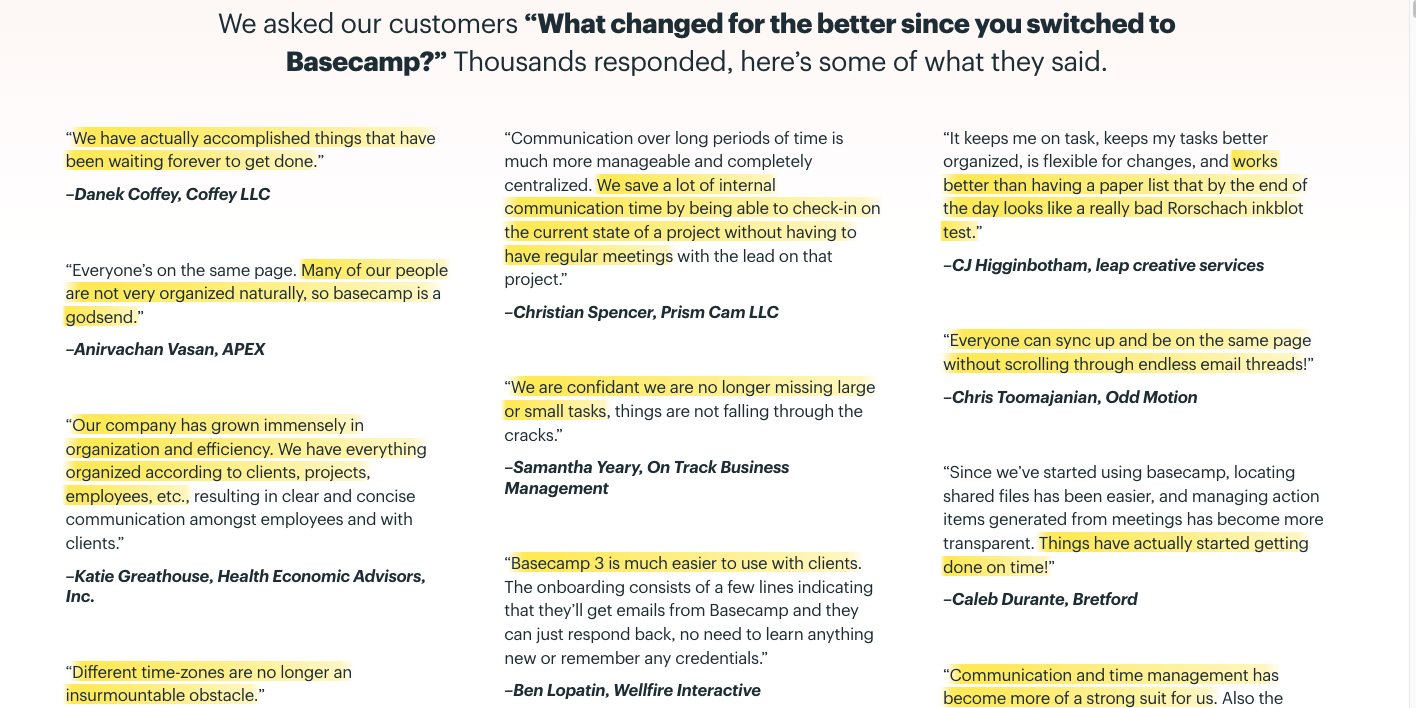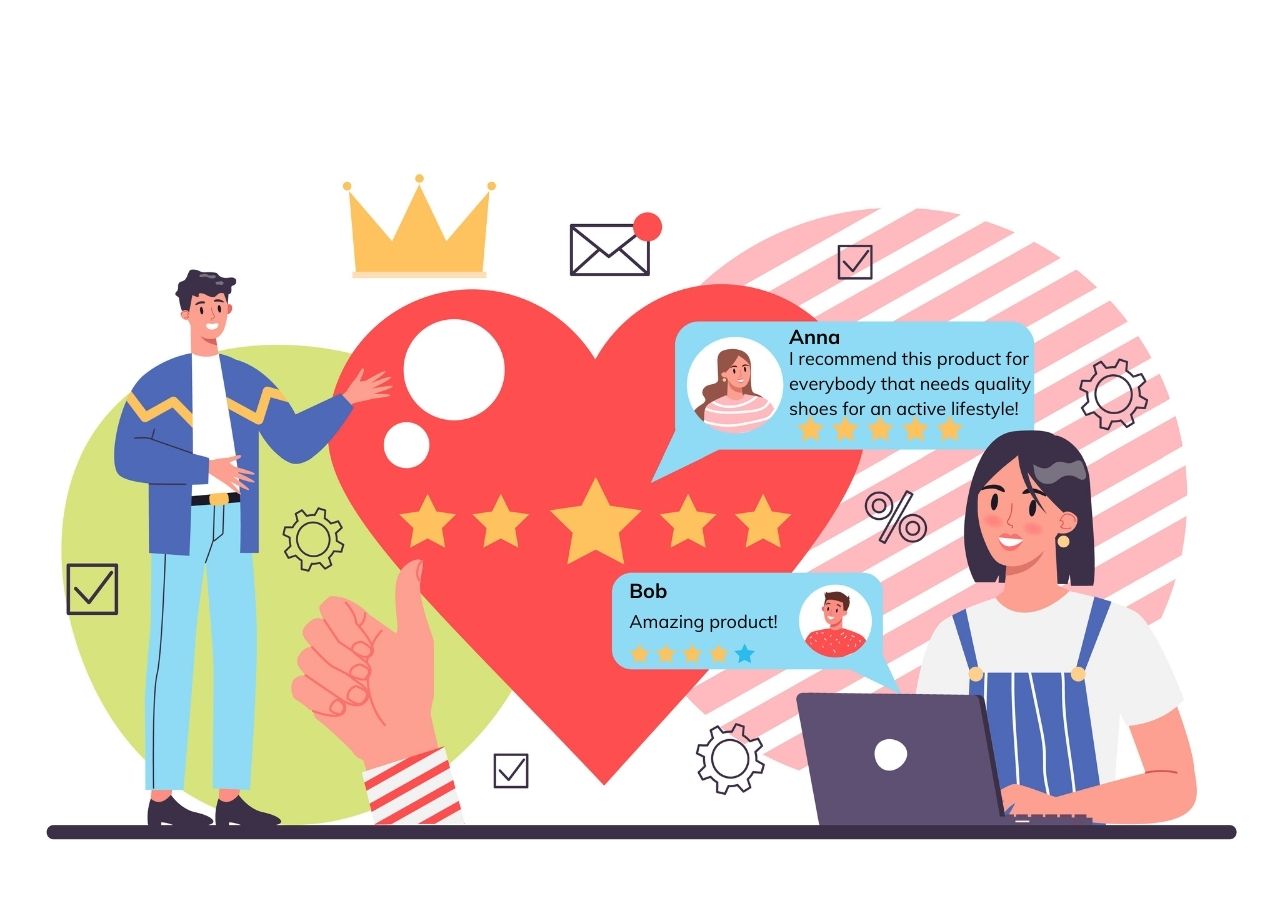Most buyers want some guarantee that the goods or services will be worth their money before making a purchase. Customers are increasingly turning to reviews and testimonials from other customers for this assurance. The fact, people are more interested in what strangers say about your company than what you have to say. Authentic testimonials outperform all of your other marketing materials and sales methods. The power of reviews has long been established, with the study of Statista showing specifically how reviews work to influence the purchasing decision.

A company can display client testimonials in a variety of ways. When deciding on the ideal approach for your company, keep in mind that different formats and mediums might have differing effects on your target audience.
In a previous piece titled “Make Your Website More Trustworthy“, we also discussed customer testimonials. Today, we’ll look at how this is done and how to boost conversions by gathering amazing client feedback.
Video testimonial compilation
What is the video testimonial?
A video testimonial is a video of a satisfied customer or client praising a business. They discuss how that company’s product or service helped them in solving an issue. They might talk about themselves, how they use the product or service, and what they enjoy about the product.
Why you should have video testimonials on your website?
The main reason customers relate to testimonials is that they are supplied by real people, and video may fully demonstrate this point. Seeing the face and body language, and hearing the voice will make the speaker far more credible. And the willingness to be on camera shows they mean what they’re saying.
Highlighting someone’s real experience with your product is a fantastic way to appeal to prospective customers. With the introduction of video testimonials, businesses may now reach a larger audience of potential consumers.
How to collect video testimonials from customers?
Collecting customer video testimonials can seem challenging at first but a humane approach will go a long way in collecting great testimonies, which represent customer opinions and experiences.
If you’ve got the necessary tools and information, you can do this! In this section, we’ll provide you with all the information you need to begin collecting video testimonials.
Know when to ask
It is crucial to understand when to seek a video testimonial. Before you do anything, let consumers tell you about their positive experiences in person or on social media. They are a brand advocate if they are willing to spread the word about their excellent experience with your product.
You should also think about how long they’ve been using your product or service for them to make this decision. You don’t want to ask too soon when they haven’t had enough time to develop an experience or address their problem.
Show customers why their story matters
Even if you ask your most active and supportive consumers, you must still demonstrate why their story is critical. Someone should not force a video testimonial. Instead, consider the significance of their story to you and the possible impact it may have on the lives of others.
To help them feel more comfortable talking about their experience with your brand, product, or service, you can lead them through the steps of the interview process.
Help them in recognizing and appreciating the value you have provided them through your product or service. Using this method helps you to coach your customers through what they should say while still allowing them to tell their own stories.
Sharing a sample of a video testimonial is also beneficial. Customers will communicate more effectively if they know what you want. If you don’t have a video sample of your own, open-ended questions may be useful.
Make the process of collecting testimonials simple
Written testimonials may appear to be less demanding than video testimonials, yet they might be more difficult to get. You will boost the quality and number of your entries by making the video testimonial submission procedure as simple as feasible.
It’s important to remember that you can utilize the text transcriptions from testimonial videos, so when you collect a video, you’re getting both written and video testimonials in one.
You risk losing clients if your video recording software is incompatible with their devices or if they have to download a different app to get started.
Just a few minutes of your time is all that is needed to create a real, conversational testimonial that can help you attract new customers.
Carousel testimonials
What is a carousel testimonial?
A carousel testimonial is a rotating display of customer reviews or testimonials on a website. It typically appears as a slideshow on the homepage or a product page and allows visitors to scroll through a series of quotes or statements from satisfied customers. Carousel testimonials can be a powerful tool to showcase social proof and help build trust and credibility with potential customers. They can be used to highlight the positive experiences of customers with the company or its products, and to highlight the benefits and unique features of the products.


Why do you need to use carousel testimonials?
A Social Insider study showed that Instagram carousel posts reached higher engagement levels per post, up to 5.13% more than one-image or one-video posts, and received many more likes. Carousel posts have an average post engagement rate of 1.92%, compared to 1.74% for images and 1.45% for videos.

Though videos may seem like the natural go-to to drive engagement, they also demand a lot of attention from their viewers — something they’re not always willing to give. Videos on your website can be up to 60 seconds long, though they don’t necessarily “get to the point” as quickly as carousels can. People generally only watch these videos for three to ten seconds, or an average of eight, before their attention span runs out. You need to ensure the efforts it takes to make a video will pay off with your audiences.
Movement on a page tends to catch the attention of visitors. A rotating carousel of text or video testimonials will draw attention to your customers’ tales. This also allows you to show more testimonials without taking up additional page space.
On the other hand, videos in a carousel, which can be short snippets and require less viewing time per individual video, are very effective. In a recent study, carousel posts containing videos received the highest number of comments, with a median of 26.07 comments per post.
How to make the testimonials look good?
There are a few things to keep in mind when creating your testimonials carousel.
1. Credibility of testimonials
First, make sure the testimonials that you choose are positive and specific, but also genuine.
Generic praise won’t do much to convince someone to buy from you. That might even come across as fake.
If the customer names a specific employee or product or speaks about a problem they had before, the testimonial text is instantly more credible.
It is also good if there is some personal information about the customer who makes the testimonial.
You can ask for a profile picture, name, location, organization, title, or other relevant details to be shown on the testimonial slider. The customer can choose which testimonial fields they answer.
2. Topic of testimonials
Second, choose various topics covering different aspects of your business.
If all of your testimonials are about your great customer service, potential customers might get the impression that your product is lacking.
This may be managed by sending out testimonial forms at various points in the customer journey or by arranging the survey questions so that the respondent is encouraged to discuss a certain subject.
3. Form of testimonials
Lastly, the widget itself needs to fit your brand image.
You need to focus on:
- Brand colors
- Company logo
- Fitting language
- Tone of voice
- Font and font size
- And other small details like that
We thus provide you the option to change them to suit your taste! No coding skills are required; only a keen eye for stylish details.
Case study link
What is a case study?
A case study testimonial is a customer telling the world that they enjoyed your product or service, the results they experienced were dramatic, and they recommend your services to others.
Not just any quote pulled from an interview is going to work well as a testimonial in your case study. The quotes you choose to highlight should be specific, and resonant. “It’s great and I’m happy!” convinces no one.

How to get an effective case study link?
A case study examines your consumers’ experiences in depth and delivers a lengthier, more complete testimonial. It does not necessarily mean talking solely about the product, but showing and communicating with your audience a task, for example, that was done before using the product, versus after having your product. It’s an opportunity to hone in on using emotional language and visualization, showing the before-and-after difference and the shift to an overall positive experience. Remember, show, don’t tell.
Instead of giving the entire case study, which is likely to make your landing page too long to hold clients’ interest, give a link to the complete case study. Select a handful of the most powerful and important quotations or facts from the case study to add to the landing page.

On the landing page, let’s highlight a particularly moving customer story in a case study, encouraging visitors to discover more with a prominent link.
This sort of Social Proof is ideal for more expensive and long-lasting items or services, which clients often take longer to examine.
Populating list
What is the populating list?
Populating list is a form of a comprehensive list of all testimonials. If you have a long list of relatively short reviews or testimonials, use a populating list to make these stand out. Testimonials are isolated from other parts and presented on the landing page. Although users may only read a handful of these testimonials, the unending list of Social Proof is certain to enhance landing page conversion rates.

Tip: If you have longer testimonials, highlight the most essential keywords in bold or highlight them to guide the reader’s attention.
Pros and cons when using the populating list
Populating can also help:
- Increase relevancy by mentioning particular client key problems.
- Drive conversions, as consumers who read testimonials, are 58 percent more likely to convert
- Showcase important features in an easy-to-read format.
Furthermore, you should consider utilizing this method to display client testimonials:
- It may appear to conflict with the preceding statement. While your testimonials should always retain a tight focus and avoid becoming overly wordy, they should also include enough information to seem genuine.
- Including too much information will weary the reader and cause them to click away.
- Our online attention span is only 8 seconds, and testimonials, like the rest of your website content, rely on that short attention span.
Conclusion
No matter what anyone says, testimonials always have – and always will be – a great example of how a story can increase sales.
Creating a meaningful testimonial doesn’t have to be hard work. You just need to know which format will be most impactful for your audience.
Regardless of the sort of testimonial you like, telling people about the benefits your product or service can provide them in the words of individuals who are (or were) just like them is a sure-fire approach to convince your target market that you’re worth their time and money.






